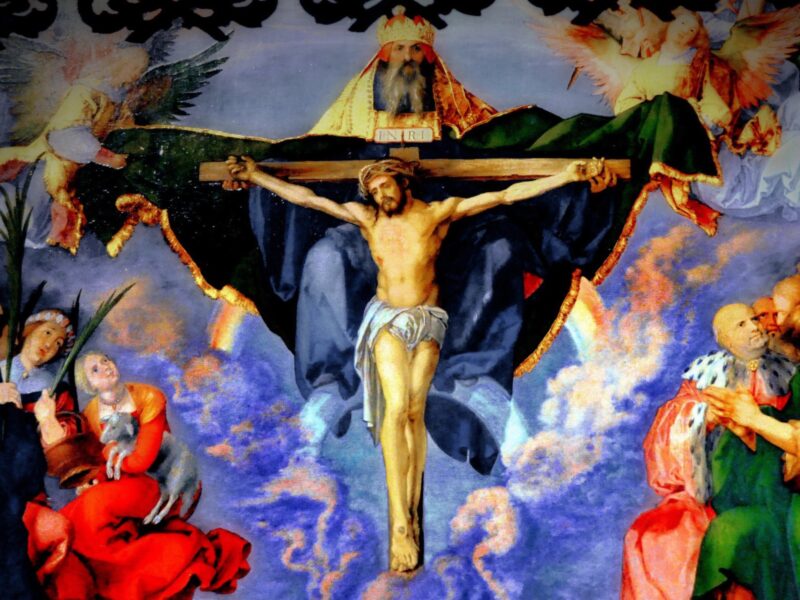
God afar and near
Nineteenth Sunday of the Year. Fr Jonathan Fleetwood preaches on the resonances of the stories of Elijah and the risen Christ with today’s Gospel.
By giving us today’s first reading about Elijah, the Church is inviting us to take up the resonances from the Old Testament which are present in Matthew’s account of Jesus stilling the storm.
Elijah is up Mount Horeb. He wants to be in God’s presence. Mount Horeb points to the firmament of the all-powerful God. God calls Elijah into his presence.
Against expectation, Elijah does not find God speaking in his most powerful effects, his signs and wonders: wind, earthquake and fire. Instead he finds God speaking in the ghost of a whisper of wind.
He finds God, not in his wonders from afar, but finds him near, at the entrance to the cave, the threshold, the place of greeting. God is not only an afar God, but also a very near God. He is present to Elijah in sign.
This is an incarnational moment having reference to both God afar and God near. The responsorial psalm (84) refers in its own way to something similar too: justice looks down from heaven and afar; the earth under our feet bears fruit. There is call and response.
The Gospel starts by distancing Jesus from the crowd and disciples. A bit like Elijah, Jesus arises and goes up into the hills, apart, to pray to his Father. He then comes to the disciples both from the eye of the storm and from his Father. He is not only in unity with the Creator God from afar, he is the ‘ghost’ in the wind, but also the ghost of the wind as the wind calms.
He raises Peter over the gunnel of the boat, the threshold to the group of disciples. This is the place of greeting and the place of the disciples’ response. Jesus is God, both far and near. He is one with the powerful Creator God and also one with God of the quiet presence, fruit-producing, faith-producing.
The reality of Jesus, as the reality of God, may not be at first apparent. Jesus has to be sought, as Elijah seeks God. Peter and the disciples seek him. The appearance of Jesus cannot be taken in at one go. Blurred perceptions have to be clarified. God is seen and not seen as he comes in sign. Here the sign is Jesus himself.
Elements within today’s Gospel also have resonances with the post-resurrection appearances of Jesus. Both the disciples in the boat at sea and those disciples who meet Jesus after his resurrection are at first unable to identify Jesus. Elijah had problems identifying God on the mountain.
In each case, Elijah, the disciples at sea in the storm and the disciples meeting Jesus after his resurrection, there comes a theshold moment or identity point. For Elijah it is at the mouth of the cave and the ghost of the wind. For the disciples in the storm it is Jesus getting into the boat and the wind dropping. For the disciples after the resurrection it is in Jesus passing through a door, saying a blessing or giving a meal.
Jesus greets and becomes present. Sometimes his presence comes with the words, ‘Be not afraid.’ This is the call to temper the fear of awe arising from the fact that the all-powerful God could come to be present in this man. He is in this person Jesus at this point of meeting. Jesus raises the disciples over a belief threshold.
We all stand at moments of God’s disclosure in our lives, thresholds in our life, points of being greeted. We need to see them as bearers of God’s presence. We see and do not see. There is often obscurity, but also God’s presence in reality is there. We may say with St Thomas Aquinas,
O Godhead hid, devoutly I adore thee.
This applies to all sacramental occasions, all events of meeting and greeting the Lord and acknowledgements of his presence.


